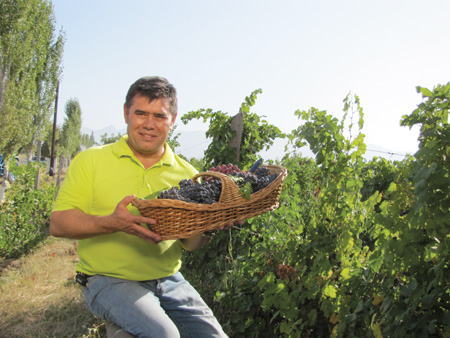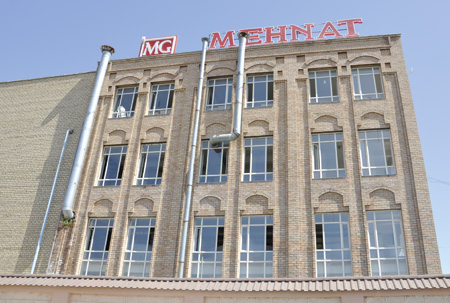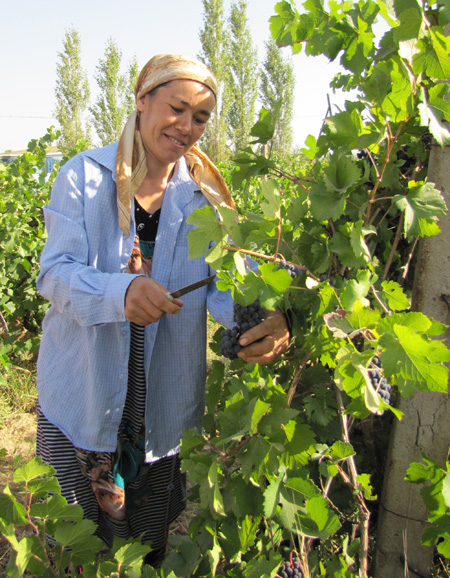World Uzbekistan
Largest and richest republic of the five ones of Central Asia, this country, as big as Spain, is mainly a desert with only 10% of lands exploited (intensive farming and irrigated valleys), with a very contrasted continental climate cold in winter (-10 to -30°C) and very hot in summer (+35 to +40°C), which naturally protects the vines.
Since the independence in 1991, Uzbekistan, with a strong agricultural density, has significantly developed its potential, mainly with cotton that the country is one of the biggest exporter of in the world, as well as with fruits and vegetable.
Vines have probably been introduced in Uzbekistan at Roman time thanks to the Silk Road. At the time of Gorbatchev a big part of the vineyard has been pulled out to fight against alcoholism.

Currently the Uzbek vineyard totals 127,000 hectares (wine and table grapes combined). The development of the viticultural sector has become a national priority since 2006 and expects an increase of the vineyard surface area by 22,000 hectares by 2015 bringing it at 150,000 hectares.
Uzvinprom Holding, a public company, is one of the most important wine producers of the country and exploits 4% of the vineyard. It is the organ in charge of the elaboration and management of the sector-based policy. The company carries out marketing surveys and elaborates the export strategies, works with research institutes to make new products.
Since 10 years, the vineyard has evolved a lot with the introduction of new grape varieties, modernization thanks to investments in vinification, treatment, cooling, storage tools to meet the international standards and get access to export markets. With such a revolution, Uzbekistan is currently applying for the membership of the OIV.
Many indigenous grape varieties of the Soviet period, also present in the countries of South Caucasus, remain. The planting of European varieties (Cabernet Sauvignon, Pinot Noir, Riesling…), together with a perfect technological mastery of the vinification, create new Uzbek wines with a European organoleptic profile intended for the domestic and export market.

The winerie Mehnat

The most important cellar Mehnat Group created in 1993 (private capitals) is at Tashkent. Mehnat Group crafts excellent vivid, aromatic, dry wines made with Pinot Noir, Cabernet Sauvignon, Saperavi and Hindogni for the red wines, and Riesling, Rkatsiteli, Bayan Shirei and Kuldginskii for the white wines. It currently exports 20% of its production to Russia, Kazakhstan and other republics of Central Asia. In a parallel, it also makes wine brandies marketed after 3 years ageing in barrels.
In Tashkent you will also find the winery Tashkentvino that produces luxury vodkas and aged brandies. Since 2010, they opened a new plant and develop their technological tool. 
Une vendangeuse ouzbèke
On the road to Samarkand, the wineries Jomboy Sharab and Khovrenko, with a still soviet profile, start to develop a new European-style technology. The region developed viticulture in 1868 thanks to Dimitry Filatov and later in 1927 with Mikhael Khovrenko, a chemist who developed the crafting of wines and liqueur wines. In their museums, it is possible to taste collection, dessert, muscat-like wines.Uzbekistan embassy in Paris
M. J. MUTALOV
Tél: 01 53 30 03 53
UZBEKISTAN AIRWAYS in Paris
à Paris
Tél: 01 45 22 45 50
We advise:
YASMINA TOURS
Saidahmad RAUBAEV